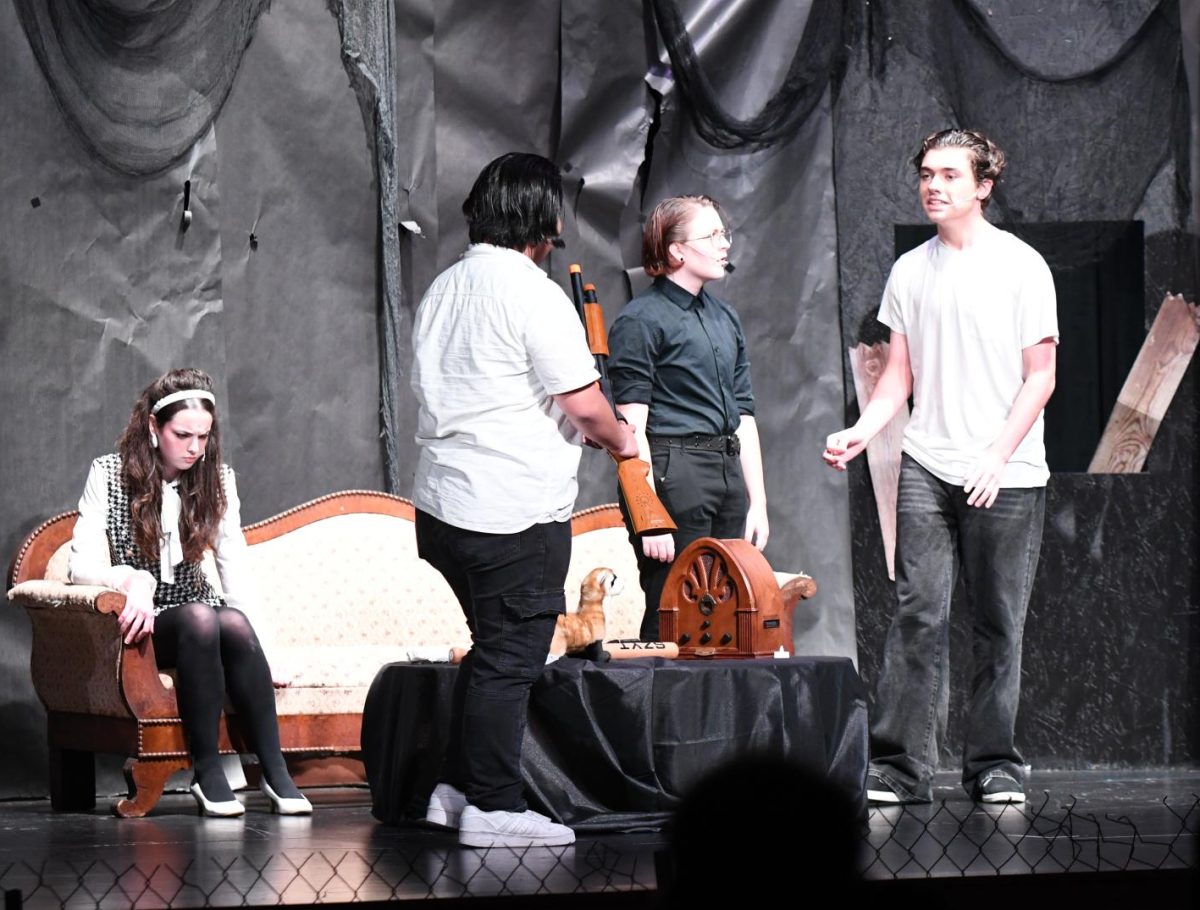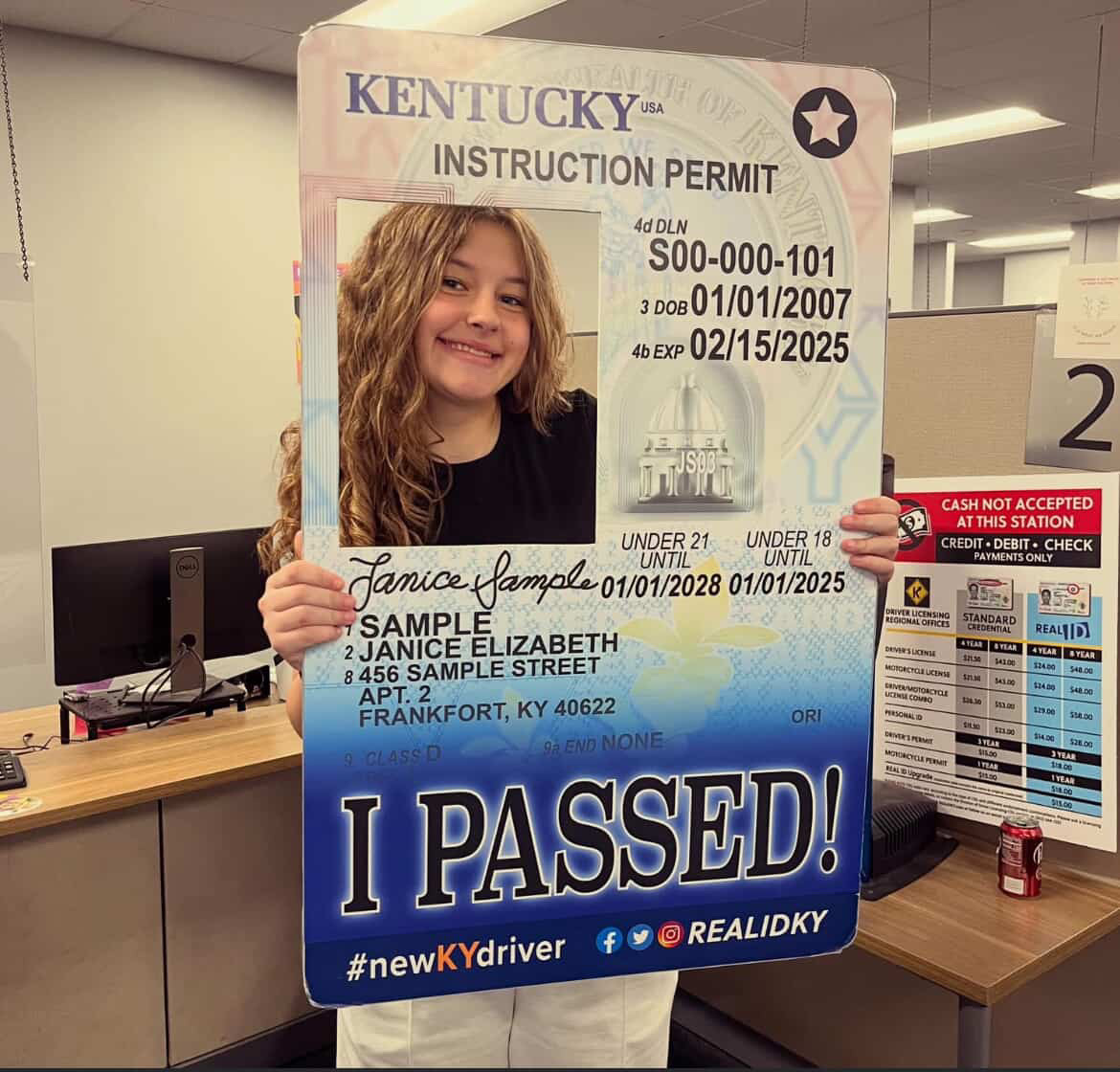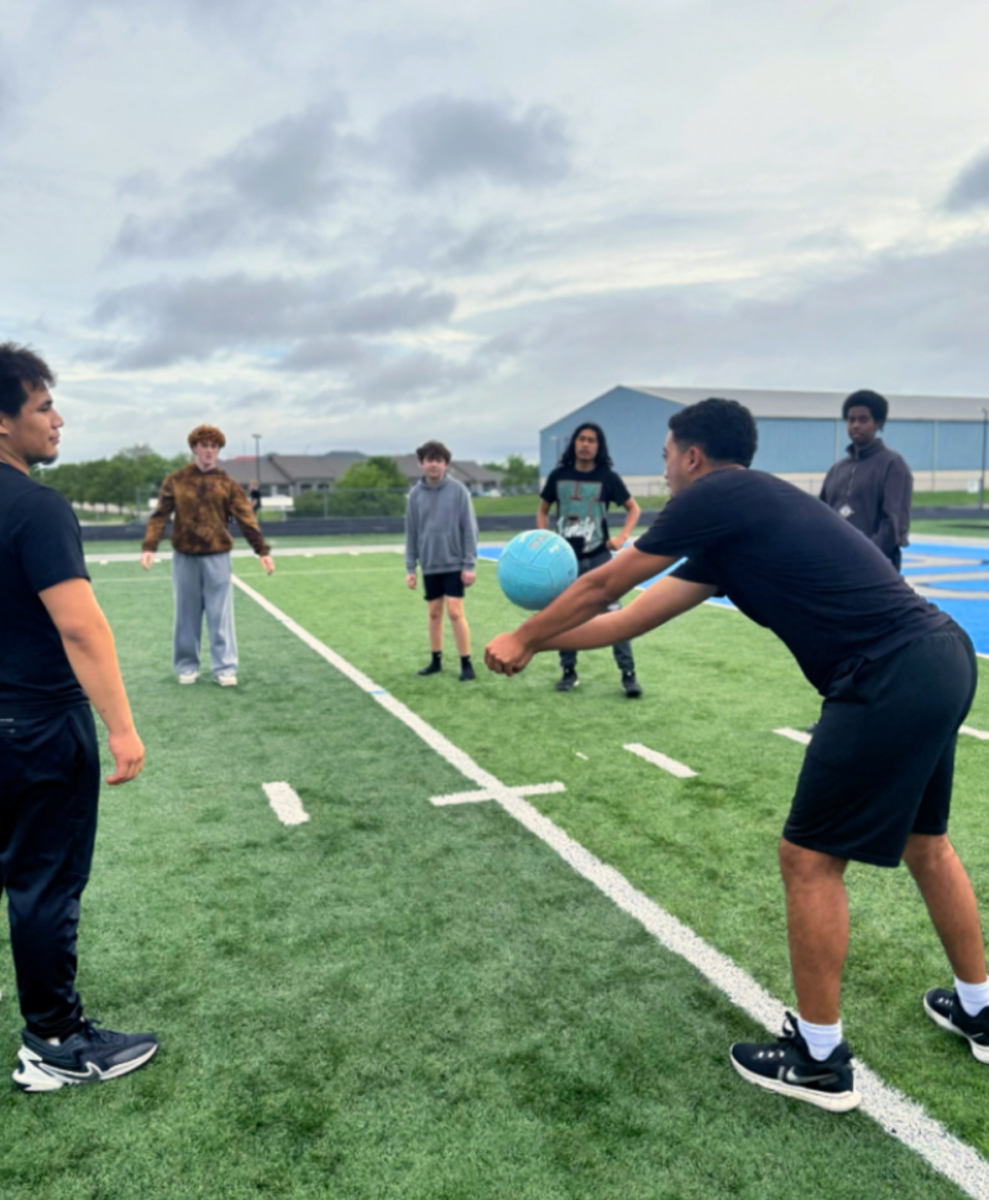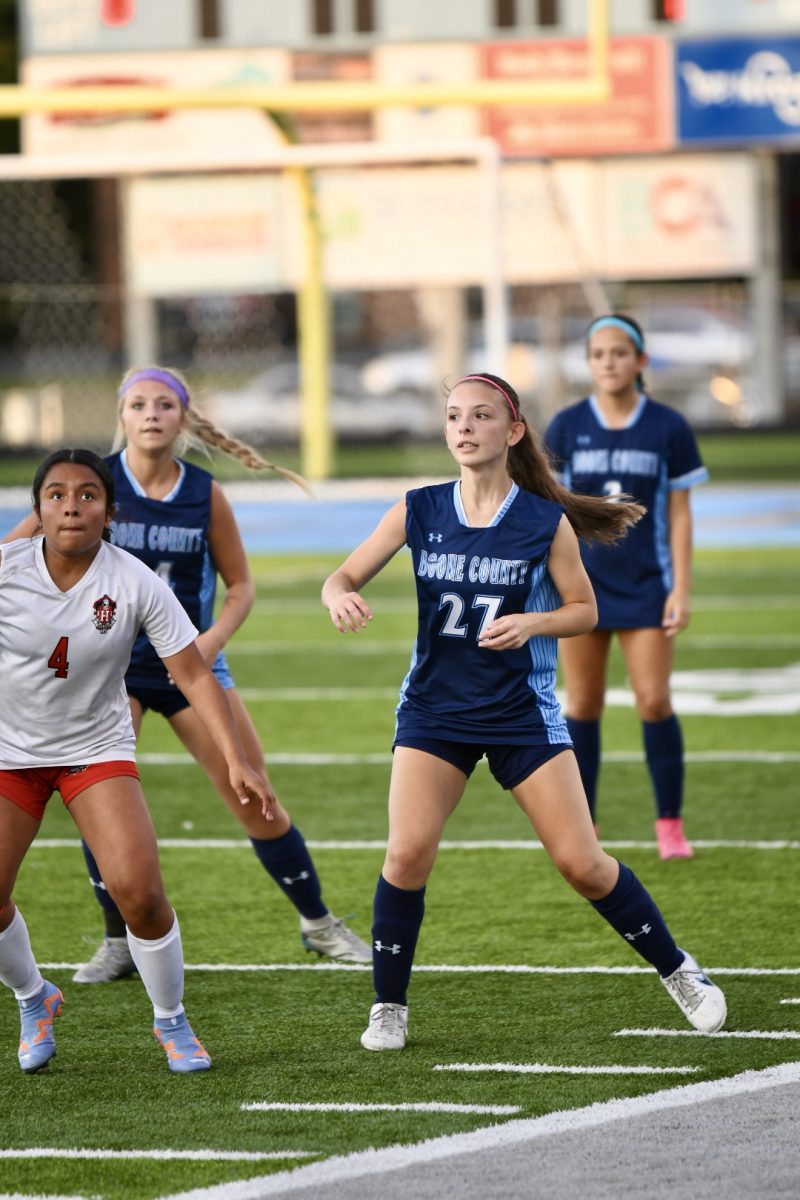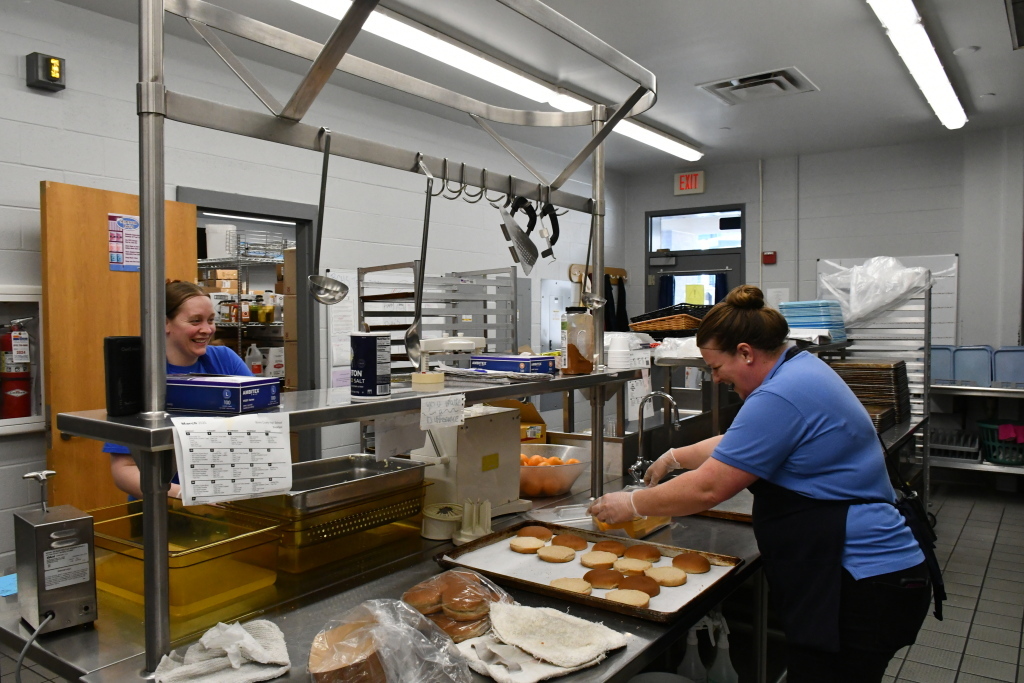Boone’s new performing arts center has seen three performances by The Spotlighters, the school’s theater club. With the help of teachers, The Spotlighters have been able to recreate popular, entertaining productions that have made the biannual shows a spectacle people look forward to.
But just what do these teachers do? Many know what the cast and crew do, but the contributions of the teachers aren’t quite as clear cut.
There are the production directors, Heather Holbrook and Alexis Taylor, the musical director, Andrea Leffler, and the band director, Daniel Barnhill. Each of these teachers bring their own necessary touch to these performances.
Without them, the spectacular performances of the cast and crew would be dimmed and so, in an attempt to shine the limelight on the little things that make up the backbone of theater, it’s necessary to look beyond the stage, months before a production.
The first thing the directors must decide is which production The Spotlighters will perform come fall or spring. There are multiple factors that go into deciding which productions they choose: popularity, sizing, gender of the cast, and cost are the biggest factors that the directors consider.
The popularity of tentative choices is an important factor in deciding whether or not that production will be the one that The Spotlighters perform. After all, the popularity of a production affects ticket sales and how expensive the rights to it would be.
The sizes of any given production can vary dramatically, from six-person casts to more than 20. There are so many different productions, and all of them have different casting needs.
The directors need to make sure that the production they choose is not so big that The Spotlighters can not fill all the roles, and not so small that the roles available are so competitive that freshmen and beginner actors have no chance at being part of the crew.
The Spotlighters are a group largely made of female performers. Because of this, the gender of the main cast is very important in deciding which production The Spotlighters perform.
Most male parts in musicals are typically for baritone singers, while female parts are typically suited towards sopranos or altos, which makes it more difficult for female actors to take a male role in musicals.
Some female actors are not comfortable playing male roles, and depending on the licensing of specific productions, the directors are sometimes not permitted to gender swap the characters.
Concerns such as these are why the original gender of character plays a factor in deciding on productions.
Cost of a production is one of the biggest deciding factors in a performance, as well as one of the most varying. The cost of a production varies significantly based on the amount of performances and backing tracks.
Historically, The Spotlighters have spent anywhere from $1,800 to $3,000 per musical. The Spotlighters have been able to use the band to mitigate the cost of backing vocals during performance nights, but they typically have to use pre-recorded, licensed backing tracks during rehearsals.
There is another way for The Spotlighters to get backing tracks: professional musicians and accompanists.
Professionals are typically preferred because they follow the actors at their own pace. Anything from an actor’s tone and tempo can be tweaked and stabilized.
However, professional musicians and accompanists are incredibly expensive. With rates ranging from $50 to over $300 per hour, it’s unlikely that The Spotlighters can afford to consistently hire them to oversee rehearsals and performances.
The cost of a production is a critical factor because the majority of The Spotlighters budget comes from the ticket sales of the previous performances, which limits which productions they can perform.
The directors look at which productions The Spotlighters are most excited for and use that as a guide to look at the other factors that decide a performance.
After deciding on and buying a production, the directors must then advertise the production and hold auditions to create their cast. Holbrook manages completing the paperwork and ordering the production from the licensing company.
Taylor designs the advertisements, audition requests, and distributes them throughout the school with the help of The Spotlighters.
The requirements and the judges for an audition vary from a musical and a play. For a play, Holbrook and Taylor look at tone, projection, and movement to decide for different roles.
For musicals, Holbrook, Taylor, and Leffler look for those traits as well as pitch control, range, and accuracy to decide a cast. As the musical director, Leffler has the unique ability to weigh in during auditions to help assign students based on their voice range to make sure that the parts they are assigned fit within the student’s ability.
Sometimes the directors have a difference in opinion who would be better suited to any given role. To finalize the castings, the directors will often issue callbacks.
Callbacks are an important tool the directors use in order to pick an actor if multiple people audition for the same role or if they believe that an actor would be suited well for something else. Callbacks are the act of bringing back a performer to see them in another role or in direct comparison with another actor.
Once a cast is finalized, rehearsals begin. This is where the directors work most closely with the cast, the crew, and the live band.
Barnhill works closely with Taylor and Holbrook during the productions to add live music. He allows students in band to volunteer for roles, and evaluates their ability to learn and practice the pieces—often professional orchestra level—in their own time before opening night.
“We use live music to help our kids get involved in our productions … we try to make sure the productions are-student led,” Taylor said.
Leffler, the school’s choir director, lends her expertise to the Spotlighters’ productions as their very own vocal director. During rehearsals, Leffler helps students learn the notes, rhythms, and dynamics of each song before it goes on stage, playing piano so that actors can hear the song before it’s all put together.
As opening night draws closer, Leffler often sits in on rehearsals and offers students extra feedback on their vocals to identify and fix trouble spots so that the songs are ready to go on opening night.
Holbrook, co-director of the theater productions, directs the cast and designs sets and costumes for their productions. She directs the blocking—how actors move across the stage—and choreography of the actors.
Paperwork-wise, Holbrook ensures that the production is in full compliance with copyright laws.
Taylor, co-director of the theater productions, directs the crew, and manages sounds and lights. She helps the crew paint sets and reaches out to local schools to loan out different pieces between them all.
Taylor contacts parents and creates advertisements for the productions. Like any school club, The Spotlighters is a place for people to hone valuable skills with the help of dedicated teachers. People with no experience in theater have the opportunity to grow their unique skill set with teachers, guiding them every step of the way.
And so, when the curtains rise and the lights are on, the cast and crew have the stage ready for them to show off all that they have learned in the months leading up to opening night.
